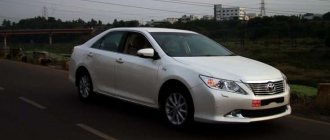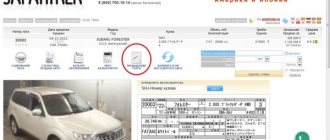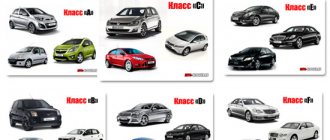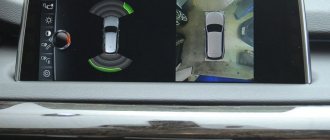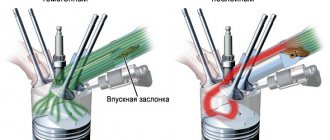In the 21st century, the issue of caring for the environment has come to the fore. To maintain a healthy environmental situation, most countries in the world have begun to introduce certain restrictions on the amount of emissions of harmful substances into the atmosphere.
In order to minimize the release of heavy metals and other fuel processing products during the operation of an internal combustion engine in personal cars, the governments of most developed countries decided to introduce the concept of environmental class of a car.
Ecological class of cars: concept and essence
The concept of environmental standard includes a list of requirements for the amount of harmful substances emitted into the atmosphere during operation of an internal combustion engine.
Substances that significantly pollute the environment include:
- carbon monoxide or CO;
- nitrogen monoxide or NO;
- hydrocarbons formed during fuel evaporation;
- sulfur dioxide or SO2;
- lead or Pb;
- fine solids.
Criteria for grouping cars by class
Table by year and EURO class.
Every car entering the territory of Russia or the European Union undergoes mandatory certification.
During the research process, specialists check:
- the amount of harmful gases emitted by the vehicle;
- the presence of small particles of solids;
- presence of unburnt fuel in the vehicle exhaust.
In most cases, parameters are measured using special equipment.
After receiving all the diagnostic information, specialists classify the car as a specific eco-class and make a corresponding note in the technical passport.
How to find out which eco-class a vehicle belongs to?
There are 3 main methods that allow you to clearly determine the environmental class of a car:
- Using the appropriate entry in the vehicle’s technical passport.
- Using Rosstandart tables.
- By unique VIN number through Rosstandart tables.
Note! Any of the above methods for determining the eco-class of a car is reliable. The only exceptions are cars with a broken VIN code.
Checking the eco-class of a car by title
The vehicle passport contains comprehensive information about the vehicle.
In most accompanying papers for modern cars, in column number 13, the environmental class is indicated in words.
Technical data sheets for outdated vehicle models may not contain such information. In rare cases, information about the eco-class of an old car can be found in the additional marks column.
Expert opinion
Natalya Alekseevna
Outdated car models that do not have eco-standard records in the PTS can be classified using the Rosstandart table. Such information must be present in the new sample documents.
Checking the eco-class of a car according to the Rosstandart table
In order to check cars entering the territory of the Russian Federation, a special agency responsible for certifying cars has developed a table that allows you to find out the environmental class of a vehicle.
The main criteria that determine which environmental class a particular car belongs to are:
- year of issue;
- country manufacturer.
The modern Rosstandart table looks like this:
| Country of manufacture of the vehicle | Year of manufacture of vehicles | |||
| Distribution of vehicles by eco-class depending on year of manufacture | ||||
| 2 eco class | Environmental safety class 3 | 4th class eco class | 5th class eco class | |
| European Union countries, petrol engine | 1997 – 2000 | 2001 – 2004 | 2005 | October 2009 |
| European Union countries, diesel engine | 1997 – 2001 | 2002 – 2004 | 2005 | October 2009 |
| United States | 1996 – 2000 | 2001 – 2003 | 2004 | – |
| Japan | 1998 – 2004 | 2005 – 2010 | 2011 | – |
| China | 2004 – 2007 | 2008 | 2011 | – |
| South Korea | 2001 – 2002 | 2003 – 2005 | 2006 | – |
| Ukraine, M category cars | 2006 | 2010 | 2014 | – |
| Ukraine, N car category | 2007 | 2010 | 2014 | – |
| Belarus | 2006 – 2007 | 2008 | 2014 | – |
| Uzbekistan | 2007 – 2009 | 2010 | 2012 | – |
| Kazakhstan | 2006 – 2011 | 2012 | 2014 | – |
| Russia | 2006 – 2007 | 2008 | 2013 | 2014 |
| Türkiye | – | – | 2009 | – |
| Iran | 2009 | – | – | – |
Note! The table shows the dates from which the country began to produce cars with a certain eco-class.
Cars produced before the years indicated in the table have eco-class 1 or cannot be classified at all.
Obtaining information about eco-class by VIN number
Why is EURO-5 fuel better?
Many car owners are wondering how to determine the environmental class? Each vehicle must have its own unique VIN number.
A table with a car’s VIN code is usually located in several places:
- on the driver's door pillar;
- under the front passenger seat;
- under the hood.
The service table contains the following information:
- country of manufacture of the machine;
- Car model;
- body type;
- engine's type;
- type of gearbox;
- plant department;
- serial number of the instance.
Expert opinion
Sergey Aleksandrovich
An independent expert in the field of assessment after an accident, an experienced car lawyer.
Get free help!
. Dismiss
Despite the fact that the environmental class is not indicated directly in the Vin number, it can easily be calculated by country of manufacture and year of production using the Rosstandart table.
Requirements for environmental friendliness of a car in the modern world
A car is not a luxury, but a means of transportation - a famous character in a famous work quite rightly stated. But besides this, a car is a source of emissions of toxic compounds into the atmosphere, and therefore into the ecosystem of the country of residence. Let's talk about the environmental class of the car.
Vehicle exhaust gases are a product of combustion (oxidation) of carbon fuel. They contain both harmless or rapidly decomposing substances, as well as toxic components and carcinogens.
The first include:
- Nitrogen (N2)
- Water vapor (H2O)
- Oxygen (O2)
- Carbon monoxide (CO2)
The latter are represented by the following compounds:
- Carbon monoxide (CO)
- Hydrocarbons
- Aldehydes
- Soot
- Benzpyrene
A significant increase in the concentration of toxic components and carcinogens in places where vehicles are congested causes a deterioration in the general state of human health and an increase in the number of cancer diseases.
How it all began
Due to the threatening environmental situation, in 1992, the countries of the European Union were forced to adopt a set of legislative acts regulating the content of toxic compounds in car exhaust. The first regulatory document had the collective name Euro 1.
Four years later, the standards were tightened again, and the Euro 2 environmental standard was released. But this was only the beginning. Under increasing pressure from the Greens, revisions of environmental safety standards 3, 4, 5 appeared.
On the territory of the Russian Federation, the Euro 2 standard was introduced in 2006. In 2008, Euro 3 came into force, and after another 2 years, Euro 4. It is planned that from January 2014, the Euro 5 environmental safety standard will be introduced for cars imported into the country.
What does this mean for ordinary citizens? A ban on the import of foreign-made cars whose environmental safety class does not meet the standards in force in the country.
Read on the topic: Is it necessary to register an internal combustion engine after installation in another car?
To better understand the situation, consider the following example:
- A 2003 Citroen is awaiting customs clearance at the border of the Russian Federation. It is certainly possible to import it into the country, but it will not be possible to register it, much less obtain a vehicle registration certificate. After all, it was manufactured when the Euro 3 standard was in force in Europe, and we already have Euro 4. Now, if the car was manufactured in 2005 or later, there will be no problems with registration, since since 2005 the European Union has adopted the Euro 4 standard.
How to find out the environmental class of a car
VIN number of the vehicle
When clearing a car or other vehicle through customs, civil servants first look at the following data and documents:
- Information in the OTTS database
- Certificate of compliance with the environmental safety standard Euro 4, and as you remember, from January 1, 2014 - Euro 5
How is the environmental class of a car determined before purchasing in order to avoid the difficulties described above?
Using the vin number, which contains the following comprehensive information:
- Region, country and manufacturer
- Automobile model
- Body type
- Wheelbase
- Engine
- Transmission type
- Factory branch
- Serial number
Direct compliance with Euro 2, 3, 4, 5 standards is not indicated, but knowing the year of manufacture and country, determining the required environmental safety class will not be difficult.
For its part, the Federal Customs Service of Russia gives everyone the opportunity to use the table of vehicle compliance with environmental standards Euro 2, 3, 4, 5 of its own design.
An exception
These standards do not apply to special equipment, the registration of which does not issue a PTS, PSM (passport for a self-propelled mechanism). A mandatory condition is the maximum possible speed on the highway is 40 km/h.
Officials probably believe that diesel bulldozers and excavators will not harm the ecosystem when operating within, for example, a construction site. Well, a speed of 40 km/h makes the exhaust as clean as the morning breeze. This is for units whose diesel fuel consumption is 100 liters per hour of operation.
What to expect from innovations in the new year
First of all, the rise in prices on the secondary market for foreign-made cars, an unreasonable increase in the price of outright scrap metal. And re-registration of an already imported car that meets Euro 2, 3, 4 environmental safety class standards is far from clear.
European and American cars produced no earlier than 2009 will be allowed for import and operation. The price for them will also be appropriate.
https://znanieavto.ru
Description of currently operating eco-classes
Currently in Russia there are five environmental classes of vehicles:
| Class number | Year of implementation in Europe and the purpose of implementing the standard | Euro emission standard |
| 1 | 1992. The standard is the basis for calculating harmful substances in vehicle exhaust gases. This classification category affects only gasoline internal combustion engines. | Environmental standard assigned to vehicles with the following emissions:
|
| 2 | 1995. According to the Euro-2 standard, vehicle manufacturers were forced to reduce the emissions of harmful gases by 3 times. | ICEs with the following parameters comply with the standard:
|
| 3 | 1999. The first standard to affect diesel engines. | Euro 3 is assigned to vehicles with emissions:
|
| 4 | 2005. Thanks to the introduction of the fourth eco-standard, the amount of harmful substances emitted into the atmosphere decreased by 40% compared to the outdated 3rd eurostandard. | The Euro 4 standard corresponds to cars with the following indicators:
|
| 5 | 2009. The maximum standard in Russia, thanks to which the designers of domestic cars came to reconsider the design of most of the usual power plants. | Euro 5 regulates the following level of emissions of harmful substances into the atmosphere:
|
Note! In Europe, the Euro 6 environmental standard with more stringent restrictions came into force in 2020. The timing of the implementation of the most modern eco-standard in Russia is still unknown.
Table of environmental classes of popular cars
Most cars can be classified into eco-classes using the Rosstandart table.
Here is information about some of the most popular car models:
| car brand | Year of manufacture of the car and what environmental class the vehicle has | ||||
| Until 1996 | From 97 to 2000 | From 2001 to 2004 | From 2006 to 2010 | From 2010 to present | |
| Lada or VAZ | – | – | Euro 1 | Euro 2 for 2007 models, Euro 3 for 2008 and 2009. | Euro 5 |
| Renault, Peugeot, Porsche, Bentley, Bugatti, Skoda, Seat, Audi, Volkswagen, Lamborghini, BMV, Citroen, Ferrari, Jaguar, Volvo, Saab, Opel, Land Rover, Mercedes Benz, Lotus, Rolls Royce | Euro 1 | Euro 2 | Euro 3 | Euro 4 | Euro 5 |
| Chevrolet, Ford, Cadillac, Chrysler, Dodge, Jeep, General Motors | Euro 1 | Euro 2 | Euro 3 up to 2004 models. Later – Euro 4. | Euro 4 | Euro 5 |
| Toyota, Honda, Nissan, Mazda, Mitsubishi, Subaru, Suzuki | Euro 1 | Euro 2 | Euro 2 | Euro 3 | Euro 3 for 2010 models and Euro 4 for later ones. |
| Kia, Hyundai, Daewoo | Euro 1 | Euro 1 | Euro 2 for 2001 and 2002 models. Later – Euro 3. | Euro 4 | Euro 5 |
Environmental requirements for cars in Ukraine
In many developed countries there are clear environmental requirements for all cars. Depending on this, all vehicles are divided into several classes. Ukraine also adheres to European environmental standards.
There are certain features in Ukraine that we will consider in this article. In addition, it is important to determine the environmental class of the car that was produced or imported to Ukraine.
Basic environmental standards
Any state defines strict technical standards regarding the maximum permissible volume of harmful emissions over a period of time or per unit of mileage. The environmental class of a vehicle is a clear classification category that is used to characterize the engine depending on the harmful emissions it emits.
- Such harmful emissions include exhaust gases and fuel vapors such as nitrogen, hydrocarbons, carbon monoxide and particulate matter. Accordingly, for engines with a higher environmental class, more stringent Euro environmental requirements apply.
Today in Ukraine there are regulatory environmental standards corresponding to Euro 4. Compared with previous Euro 3 standards, these standards require a reduction in the content of harmful substances in exhaust by approximately seventy percent.
New standards for Ukraine are associated with the deterioration of the environmental situation. Modern ecologists claim that the air in the capital alone contains more than a million tons of harmful emissions. Most of them come from vehicle emissions.
Diesel engines are considered the most toxic, as they emit more harmful substances. That is why the introduction of Euro 4 standards has become a necessary measure for Ukraine. It is worth noting that in European countries such norms have been approved for ten years.
Read on: What to do if you get into an accident
The situation in Ukraine
Modern Euro 4 requirements were introduced in Ukraine last year. They apply to all cars that are imported into our country, as well as to cars produced in Ukraine. However, most Ukrainian manufacturers were not ready for such requirements. In this regard, a two-year deferment was introduced for most of them.
The decision was made so that manufacturers could upgrade their cars to comply with Euro 4 standards. In addition, according to modern requirements, these standards do not apply to cars that were already in use before the introduction of new technical standards.
After registering a car at customs, it is immediately assigned an environmental class. An environmental certificate is used to determine it. After this, the class is recorded in the car’s passport. It turns out that if the imported vehicle does not correspond to Euro 4 class, it will not receive a passport.
Without a vehicle passport, the car will not be able to participate in road traffic.
Obtaining a Euro 4 environmental certificate
Previously, when importing a car, a customs officer determined whether the vehicle belonged to a certain environmental class using a special database. However, in such a situation, controversial issues also arose, since many brands simply were not in such databases.
Customs officers had to contact special certification centers. In these centers you can receive an environmental class certificate based on your passport.
Therefore, starting from 2010, all customs authorities added the Euro 4 environmental class certificate to the list of documents required for filing a customs declaration.
This certificate is issued at a special certification center.
Definition of EC
Any car belongs to a certain environmental class based on the level of the following substances in the exhaust gases:
- Nitric oxide;
- hydrocarbons;
- solids;
- carbon monoxide.
With less emissions of harmful substances, the car has a lower class. As a rule, the level of emissions is closely related to the year of manufacture of the car. Thus, automakers are trying to adapt their models to modern requirements.
In Europe, similar norms have been defined by the Geneva Agreement since 1988. In Ukraine, standards were introduced ten years ago. Therefore, these standards do not apply to cars manufactured before 2010.
In this regard, the class can only be determined for cars with a later year of manufacture.
Modern methods of determining the environmental class of a vehicle Today, in order to determine whether a car complies with a particular environmental class, the following methods can be used:
- check the car's title, which usually indicates this parameter;
- use a correspondence table;
- enter the VIN into the online database of certified vehicles.
Clarification of the environmental class in the PTS
The easiest way to determine the environmental category is to take information from the PTS. In the new format of this document, the relevant data is located on the thirteenth line. They are expressed in words, not numbers.
Older vehicle passport samples may not have such a line. Then you can clarify the environmental class of the car in the special marks section, which you can find in the upper left corner.
Determining the environmental class using VIN
A more modern way to determine the environmental category is to use the VIN. To resolve the issue, you will need to visit a special website. It is an online service that queries the customs approval database.
After loading this page, you should click the “Search” link, which will lead to the appearance of the corresponding form. On this form you must enter the VIN. The main advantage of this method for determining the environmental class of a car is its accuracy and completeness of the information obtained.
After entering the VIN, the system shows the driver the following data:
- car model;
- type of vehicle;
- time of receipt of approval and its validity period;
- approval number;
- ecological category.
However, in order for the system to provide all this information, you need to have a VIN that is present in the database. Unfortunately, it happens that the system does not have information about the required car. Then the driver will have to look for other ways to find the necessary information.
In particular, you can personally visit the relevant department or call it at the phone number listed on the website using a special online form.
Clarification of the environmental category of trucks
To determine the environmental category of trucks, it is necessary to use the same methods as for searching for information on passenger cars. Modern environmental requirements for trucks in Europe and Ukraine are the same.
The only difference is the effective dates for certain laws for cars and trucks. Accordingly, the environmental classes will be the same. Therefore, you can obtain information about classes for trucks using the methods described above.
Prospects for introducing new environmental requirements
Let us remind you that since 2013 in Ukraine it has been prohibited to import and register cars with the Euro 3 environmental standard. Since 2014, the requirements have been raised to Euro 4. Further it is planned to increase the requirements to Euro-5 in 2020.
In the future, it is desirable to switch to environmental standards not lower than the Euro-6 level, which is planned to be carried out in 2020. However, it is not yet clear whether Ukraine is ready for this. Initially there were huge problems with the introduction of Euro 3 requirements, which was planned for 2010.
In reality, the requirements began to apply only in 2012. The delay was due to the fact that many domestic automobile manufacturers were not ready for European environmental standards, since at that time they produced cars that met only Euro-2.
In addition, most refineries that produced fuel with low standards also delayed the introduction of new requirements.
Therefore, plans to introduce Euro-6 standards by 2020 seem fantastic, since not every manufacturer in the world was able to achieve these standards in the production of cars. To remain on the domestic market, Ukrainian producers will need to actively cooperate with foreign companies. https://ekowheel.com
Penalties
Since 2020, a new table has been introduced in the Russian Federation, which answers the question of how to find out the environmental class.
Failure to comply with the emission level of a car’s eco-class is a violation of Article 12.16 of the Administrative Code of the Russian Federation and entails a fine of 500 Russian rubles.
According to a 2020 government decree, regions can independently set emission standards in certain places. Such areas of cities can be distinguished by the presence of a sign indicating Dirty Exhaust.
If the driver of a vehicle with a low environmental class moves through a restricted zone, he will have to pay a fine of up to 10 thousand Russian rubles.
How to change the environmental class of a vehicle?
It is possible to increase the environmental class of a car that does not meet state environmental standards only through a complete modernization of the fuel system and internal combustion engine.
In this case, the owner will have to install:
- neutralizers;
- filters of harmful substances;
- catalysts.
Such measures can reduce the level of harmful emissions into the atmosphere and reduce vehicle fuel consumption.
How to determine the environmental class of a car
It is better for the driver to understand from the very beginning which designation in this category is typical for the vehicle he owns. All you need is the car's registration certificate.
The front side, fourth line at the bottom - this is where you can find the information you are interested in. This part of the document usually indicates a number. It indicates to which environmental class a particular machine can be classified. It depends on the class which laws and amendments can be applied to the car.
Several years ago, documents were drawn up that did not have a field at all where membership in the environmental class was described. If a citizen is faced with such a case, it means that he falls under the rules introduced in 2021.
There are other nuances that should be taken into account:
- Technical data sheets of some types of transport do not contain references to environmental class. And the information is not noted in the registration certificates.
- According to the updated traffic rules, it is considered that in this case the environmental class is not indicated at all. This means that the car owner will face more serious restrictions.
What are the restrictions on the environmental class of a car? Watch the video:
People who purchased a car with high-level performance several years ago will be more offended. But who did not include the corresponding mark in the documents.
You should contact the traffic police if the mark is missing. There you can apply for a new STS. The state fee for the replacement procedure is 500 rubles. And the issue itself is resolved quite quickly.
Is it possible to upgrade or downgrade the eco class?
A modern car is a rather complex device with many consumable components. One of the most important elements for filtering harmful exhausts in a car is the catalyst.
This element is installed on all new cars with environmental safety class 3 and higher. The catalyst's service life is about 200 thousand kilometers, after which it must be replaced, which costs tens of thousands of rubles.
In order to save money, most car owners in the Russian Federation install special flame arresters that deceive the Lambda Probes built into the system and reduce the car’s environmental safety class to 1 or 2. Moreover, even if such fraud on the part of the driver is discovered, changes in the vehicle registration certificate are still not possible fixed.
It is possible to increase the eco-class of a car.
To do this, specialists are upgrading the following components:
- electronic power plant control system;
- internal combustion engine.
Expert opinion
Sergey Aleksandrovich
An independent expert in the field of assessment after an accident, an experienced car lawyer.
Get free help!
. Dismiss
After conversion, the vehicle owner can reissue documents for the car and enter the changed eco-class into the title.
For most motorists who prefer Japanese cars, the values of these indicators mean little, and many are interested in what new will be introduced into the registration procedure for vehicles imported from Japan. Let's figure it out.
1. Which vehicles produced abroad comply with the Euro 5 environmental class (standard)?
Vehicles from the USA, Europe, UAE and Asia are imported into Russia. Most cars produced in these countries correspond to the 5th environmental vehicle class, starting from the following year of manufacture:
— USA and Europe – since 2004;
— South Korea – since 2006;
— Japan – since 2007.
2. What if the production date of the imported vehicle corresponds to earlier periods (before 2007 in Japan and before 2004 in the USA)?
According to experts from the car certification center, it is possible to register vehicles of earlier production periods, provided that detailed technical information about the imported car is provided. However, experts recommend that, in order to avoid difficulties in the process of customs clearance and obtaining a vehicle passport, find out in advance (before purchasing a car abroad) whether the car meets the regulatory requirements of the Euro 5 environmental standard.
3. How can I obtain a certificate of environmental compliance (Euro 5 standard)?
In order to obtain a certificate of conformity of an imported vehicle to the 5th environmental class, you must independently or through a customs broker (declarant) contact the regional certification center and provide copies of the necessary documents (see clause 5). The entire registration procedure consists of the following steps:
— filling out an application for a certificate of conformity;
— expert assessment of the submitted documentation (assessment of technical information of the imported vehicle);
— payment for the examination performed;
— issuing a certificate of conformity and entering it into the register of Rosstandart of the Russian Federation;
— issuing completed documents to the customer.
4. During what period is the certificate of environmental conformity issued?
The period for issuing a certificate of environmental compliance ranges from several hours to 5 (five) working days from the date of submission of the necessary documents to the certification center.
5. What documents must be provided to obtain a certificate of environmental compliance?
If your car meets or does not meet the requirements specified in paragraph 1, then to obtain a certificate of conformity you must:
— submit an application for the product certification procedure;
— provide documents confirming the ownership of the vehicle (invoice (final bill), bill of lading);
— photographs of the vehicle and stickers with technical information;
— export certificate – for cars imported from Japan; TITLE or BRIF – for cars imported from the USA;
— a copy of the vehicle owner’s passport with registration (if you are registering for an individual);
— copies of constituent documents (charter, OGRN certificate, TIN certificate, Rosstat information letters). All documents, including the package of documents for the imported car, must be certified by the signature of the applicant.
6. What is the cost of obtaining a certificate of environmental compliance?
In order to determine the exact cost of obtaining a Euro 5 environmental class certificate, it is necessary to submit personally or through a customs broker (declarant) to the regional certification center documents describing detailed technical information about the imported vehicle.
The approximate cost of a Euro 5 environmental standard certificate for cars corresponding to the 5th environmental class by year of manufacture (see paragraph 1) ranges from 5,000 to 7,000 rubles.
For cars that do not meet the requirements specified in paragraph 1 - from 10,000 to 40,000 rubles. In this case, there is a possibility that the imported car may not receive the necessary certificate of environmental compliance and, as a result, during customs clearance you may be denied a vehicle passport.
Currently, many customs brokers (declarants) recommend not importing Japanese cars that were manufactured before 2007. We, in turn, advise you to listen to their opinion.
It is important to remember: the decision is up to you. Perhaps, by contacting a regional certification center yourself, you will be able to obtain a Euro 5 environmental class certificate, which will allow you to register an imported vehicle.
We wish you success!
Transport tax and environmental class: is there a relationship?
How tax and car class are related.
According to the new laws of 2020, the only characteristic that affects the amount of transport tax is the power and volume of the internal combustion engine. At the same time, cars running on an electric engine are completely exempt from paying transport fees.
It is possible that in the near future the government will improve the tax code and oblige owners of old cars to pay an additional transport fee for the low environmental class of the car.
The Duma is developing a similar bill based on European laws, but so far the eco-standard does not in any way affect the amount of transport tax.
Ecological zones in Europe
Ecological zones in Europe appeared under the influence of “greens” and (oddly enough) at the suggestion of automakers. The latter needed to stimulate the purchase of new cars (especially trucks and buses). And the former were concerned that the cars comply with new environmental standards.
Provisions for ecological (“green”) zones are contained in EU legal documents.
At the same time, EU member states themselves decide when, how and where they will establish these zones, whether these zones will be permanent or temporary, and determine other conditions for the functioning of these zones and requirements for cars in them.
Ecological zones in Europe are restrictions established in some areas (cities, territories) on the entry into these areas of cars that do not meet certain environmental standards (norms).
The standard (maximum content) of harmful substances in a car exhaust is determined by the environmental class of the car, which is known to most as “Euro” (Euro-3, Euro-5, etc.).
Ecological zones are called differently in different countries. They are generally designated as LEZ (low emission zone).
There are also modifications: ULEZ (ultra low-emission zone - a zone with a very low level of emissions), or even ZEZ (zero emission zone - a zone with zero emissions).
Italy is characterized by the name ZTLA (Zona a Traffico Limitato Ambientale - environmental traffic restriction zone), for France - ZCR (zone à circulation restreinte - limited traffic zones) and ZPA (zone de protection de l'air - air protection zones), and in other countries there are names of such zones in national languages.
But the main (more or less established) name for ecological zones in Europe is still “LEZ” - Low Emission Zone.
The essence of traffic restrictions in an ecological zone is simple: if a car meets the emission cleanliness requirements established for a given zone, then it can enter this zone (and move through it). If it doesn't match, then you can't.
For violation, of course, there is a fine, and in many countries it is quite substantial, from 70-90 euros to 2000 euros or more. The amount of the fine is different in each country and depends on the category of the car, the frequency of violations, etc. parameters.
Restrictions on vehicle traffic in environmental zones are primarily aimed at restricting the movement of medium and heavy diesel trucks and buses.
Owners of diesel passenger cars sometimes get hit with a “trailer”. Owners of cars with gasoline engines (especially those that are newer, starting from the Euro-3 standard and higher) practically do not face restrictions anywhere.
It should be specially noted that:
Outside the established environmental zones, there are no restrictions on the use of cars in any European country. Regardless of their environmental class, type of fuel used, year of manufacture, etc. parameters.
That is, if you are not going to go into ecological zones, then ride there (in any European country) whatever you want. At least on a Studebaker from the thirties, or on a Moskvich-406.
Therefore, there are no restrictions on the entry of old cars into the territory of the countries of the European Union , regardless of their year of manufacture, Euro class, type of fuel and similar parameters.
Although, of course, some requirements for cars entering Europe still exist. Read more about this in the note at the link below:
A car for a trip to Europe: requirements and equipment - details about what you need from a car to drive it to Europe. Documents for traveling to Europe by car are a separate note.
Transport in which the year of manufacture does not meet the eco-standard
Discrepancies between emission parameters depending on the year of manufacture are allowed only for special equipment used in construction or rescue work.
Such vehicles have a different type of passport with serious environmental concessions.
Expert opinion
Natalya Alekseevna
Reduced requirements for the environmental friendliness of work vehicles are associated, first of all, with the high cost of equipment with high environmental standards. If the existing tractors and excavators were restricted, all construction or rescue work would have to be stopped.
Relevance of environmental standards
The current eco-standard in the Russian Federation is currently Euro-5. This standard obliges vehicle manufacturers to import for sale vehicles that comply with Euro 5.
In the countries of the European Union, only Euro 6 standard cars are currently listed. The main differences between standard 6 and standard 5 are significant restrictions on the amount of emissions from diesel engines. To comply with the latest standards, manufacturers of cars with diesel engines have to resort to various tricks and tricks.
For example, relatively recently there was a scandal with the largest German car manufacturer, Volkswagen.
During testing of vehicles of this brand, experts discovered a software deception, thanks to which the cars temporarily reduced emissions during tests, but during real driving they emitted an increased amount of harmful elements into the atmosphere, which did not even meet the Euro-5 standard.
For such manipulations, the WV company was forced to pay huge penalties and recall a huge number of cars sold from the USA and other countries.
How did the development of environmental safety occur?
In Russia, the Euro 2 standard, which came into force in 2006, gained considerable popularity at one time. Compared to its predecessor, it has become 3 times stricter. It turned out that the demands of environmentalists did not stop there. It was replaced by Euro 3, which became even tougher by 40%. Its peculiarity was also that the requirements began to apply not only to gasoline, but also to diesel power units, including.
The Euro 4 criterion has moved even further in this regard, according to which vehicles again had to become 40% safer. It has been actively promoted around the world since 2005, but on the territory of the Russian Federation it was approved and began to be observed only 5 years later. At this time, the Euro-5 standard had already been prepared, but in our country it becomes mandatory only starting in 2015.
Are Euro environmental standards really that useful?
European standards at one time made an incredible contribution to the development of efficient and clean internal combustion engines. Constant modifications to the fuel system, internal combustion engine and engine control system have allowed most companies to develop the highest quality and environmentally friendly cars.
However, the Euro 6 standard places too high demands on diesel vehicles. Even leading car manufacturers, such as VAG, cannot honestly maintain the level of harmful emissions allowed by the standard.
The introduction of the Euro-5 standard from 2014 will hit the import of Japanese cars
From January 1, 2014, an increased environmental class of Euro 5 will be introduced in Russia for cars imported from abroad, including from Belarus and Kazakhstan, the Far Eastern Customs Administration (DVTU) reported. The stated goal is to improve the environmental situation, but it will only get worse, experts say. In addition, the innovation will stop the import of the most affordable Japanese cars into Russia - from 2000 to 2006 inclusive, which now make up about a third of the market, and prices on the market will increase by one and a half to two times, its participants explain. Moreover, the lobby of the domestic auto industry can use the innovation to almost completely stop the import of used Japanese cars.
Legal entities and individuals planning to import vehicles should take into account that from the new year technical emission standards of environmental class 5 will be introduced for automotive vehicles and internal combustion engines, DVTU reported. These emission standards are introduced in accordance with the Technical Regulations on the requirements for emissions of harmful (pollutant) substances from automotive vehicles released into circulation on the territory of the Russian Federation, approved by Decree of the Government of the Russian Federation dated October 12, 2005 No. 609. If the environmental class of the imported vehicle does not meet the regulatory requirements, a vehicle passport will not be issued. At the same time, the validity of vehicle type approvals and certificates of conformity for automotive vehicles of environmental class 4 and certificates of conformity for internal combustion engines of environmental class 4 is limited to December 31, 2020 inclusive. Thus, in 2014-2015, cars or internal combustion engines with environmental class 4 can be imported into Russia.
“The lobby of the domestic auto industry can take advantage of the innovation in order to erect serious barriers for the “Japanese”. The fact is that Japan has its own environmental standard, not the Euro. And our competitors from the European part of the country can take advantage of this. For example, certification centers may decide that Japanese cars, say, only from 2009, comply with Euro 5. And such a restriction will deal a very strong blow to our business,” customs broker Roman Sultanov explained to Kommersant. “However, for now they assure us that it will be possible to import cars starting from the 2007 model year. Euro 4 allowed the import of cars starting from the year 2000. That is, the innovation “cuts off” “Japanese women” from our market from 2000 to 2006 inclusive.”
According to market participants, cars older than 2007 currently occupy approximately 30% of the Primorsky car market of used cars without mileage in Russia. The cessation of their import will increase prices on the market of used Japanese cars, but without mileage in Russia, by 1.5-2 times, experts say.
“The introduction of Euro 5 will, of course, affect prices, although it is still difficult to give an exact forecast. For comparison, today one of the most popular cars, the 2002 Toyota Ist with a 1.5 liter engine, all-wheel drive and automatic transmission, without mileage in Russia, can be found for 320 thousand rubles. And exactly the same technical characteristics, but produced in 2007, are offered for 545 thousand rubles,” said Dmitry Meshcheryakov, an employee of one of the Primorye companies importing Japanese cars.
According to experts, the innovation will not improve the environmental situation. “The law stimulates the development of corruption schemes, rather than improving the environmental situation. It is important to increase environmental requirements not only for cars, but also for fuel,” commented Anatoly Lebedev, chairman of the environmental organization BROK, Honored Ecologist of Russia, to Kommersant. “According to Euro-5, adopted by Europe in 2009, the amount of CO2 should not exceed 0.8 grams, and the Japanese Federation of Automobile Manufacturers adopted a standard back in 2005, according to which the maximum permissible level is set at 0.63 grams, that is, all Japanese cars Since 2005, they have been compliant with Euro-5, but according to the technical regulations adopted by our country, for some reason they do not fall into it,” says Maxim Vedenev, leader of the human rights organization “Tiger,” indignantly. He emphasizes that cars that comply with Euro 5 will not be able to run on gasoline of the 4th and 3rd environmental levels. Car owners will be forced to dismantle equipment that provides clean exhaust, and without it, environmental damage will not decrease, but will increase.
Oleg Zhunusov
